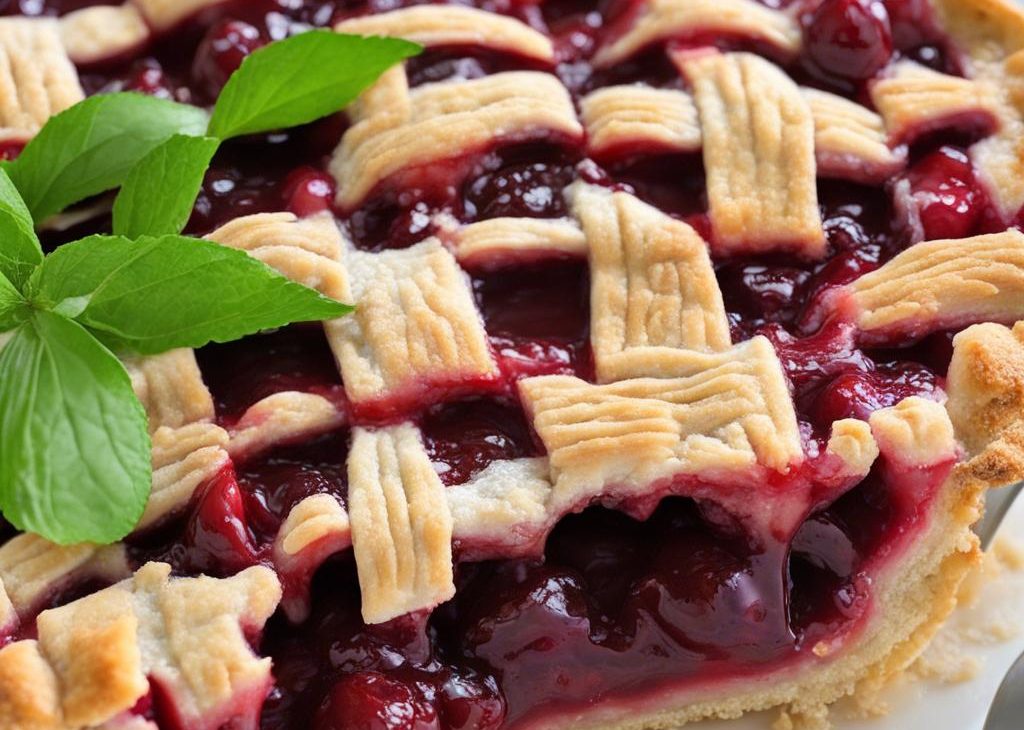


This recipe is better than ever. My homemade cherry pie is perfectly sliceable with a thick almond-hinted cherry pie filling and a golden brown buttery flaky pie crust. As always, wait for the pie to cool completely before slicing, which is a non-negotiable that helps avoid a soupy pie filling.
No store-bought pie filling or pie crust because today we’re making cherry pie completely from scratch. Does making homemade pie intimidate you? I promise this dessert specialty is nothing to fear and that’s exactly why I’m sharing my recipe with you. Out of all pie flavors, cherry pie is where most bakers depend on canned filling, but I’m going to teach you how to make the most of fresh cherries and a delicious crust.
If you’re making cherry pie from scratch, it’s helpful to know which cherry variety works best.. You can use all Rainier or all dark sweet. If using sour cherries, add a little more sugar as referenced in the recipe note below.
You can also use frozen halved or quartered cherries. Follow the recipe as written below and don’t skip the reducing step on the stove.
Pitting fresh cherries is always a tedious and messy task, so if you want to save time and prep work, pick up a cherry pitter. If you’re anything like me, you don’t like stuffing your kitchen drawers with endless gizmos and gadgets, but a cherry pitter is most definitely an exception. I don’t bake with cherries often, but when I do, I’m VERY thankful for this tool.
After you combine the filling ingredients together, set it aside and roll out the pie dough for your pie dish. During this time, your filling is already working as the sugar pulls juices from the cherries. Normally I discard all this juice, but it’s where a lot of the cornstarch ends up and that’s what helps thicken the filling in the oven.
Instead, use a slotted spoon to transfer the fruit into your crust, then pour the leftover juice into a small saucepan. You’ll only have a few Tablespoons, but this juice is pure GOLD as it holds our thickening agent and a lot of flavor. Reduce on the stove over low heat for about 3-4 minutes. Cool for 5 minutes, then pour over the cherries and toss gently (in your pie dough!) to combine.
Here’s the filling in the mixing bowl. You can see all the juices at the bottom. Spoon cherries into the pie dough:
Reduce the excess juice on the stove until it has thickened:
Let it cool for a few minutes, then toss into the cherries. The sugars in the reduced juice will harden and you’ll notice this “juice” become almost caramelized and stringy once it hits those cold cherries. This is NORMAL and totally fine! The “juice” will melt down in the oven, but keep the filling thick.
Note that our pie crust recipe yields enough dough for a double crust pie—one for the bottom and one for the top..
I made a simple lattice pie crust design with thick and thin strips, but decorate the pie however you’d like. Once your lattice is assembled, you’ll want to crimp or flute the pie crust to finish it off..
You could even skip the top crust and use the crumble topping from our blueberry crumble pie. Or if you wish to skip the pie dough completely, try these cherry pie bars instead.
Why do some pie recipes call for an initially hot oven temperature that you eventually lower? Baking this pie at 400°F (204°C) for 20 minutes helps the pie dough set and activates the cornstarch in the filling (as does heating it on the stove). After that, reduce oven temperature down to 375°F (190°C) to continue baking the pie. We use this same trick when we make blueberry pie and triple berry pie.
Before you begin, let me answer a FAQ we receive on this recipe. You do not need to par-bake or blind bake this bottom pie crust. Reducing the filling’s juice on the stove keeps excess liquid off the bottom pie dough, plus we bake the pie for long enough that the bottom crust sufficiently cooks through. It’s helpful to use a glass pie dish so you can see when the sides/bottom of the pie crust has browned.
This homemade cherry pie is perfectly sliceable with a thick almond-hinted cherry pie filling and a golden brown buttery flaky pie crust. The ingredients are exactly the same as when I originally published the recipe in 2017, but quartering *some* of the cherries instead of just halving and reducing some juices on the stovetop both guarantee that the pie filling will set up perfectly.